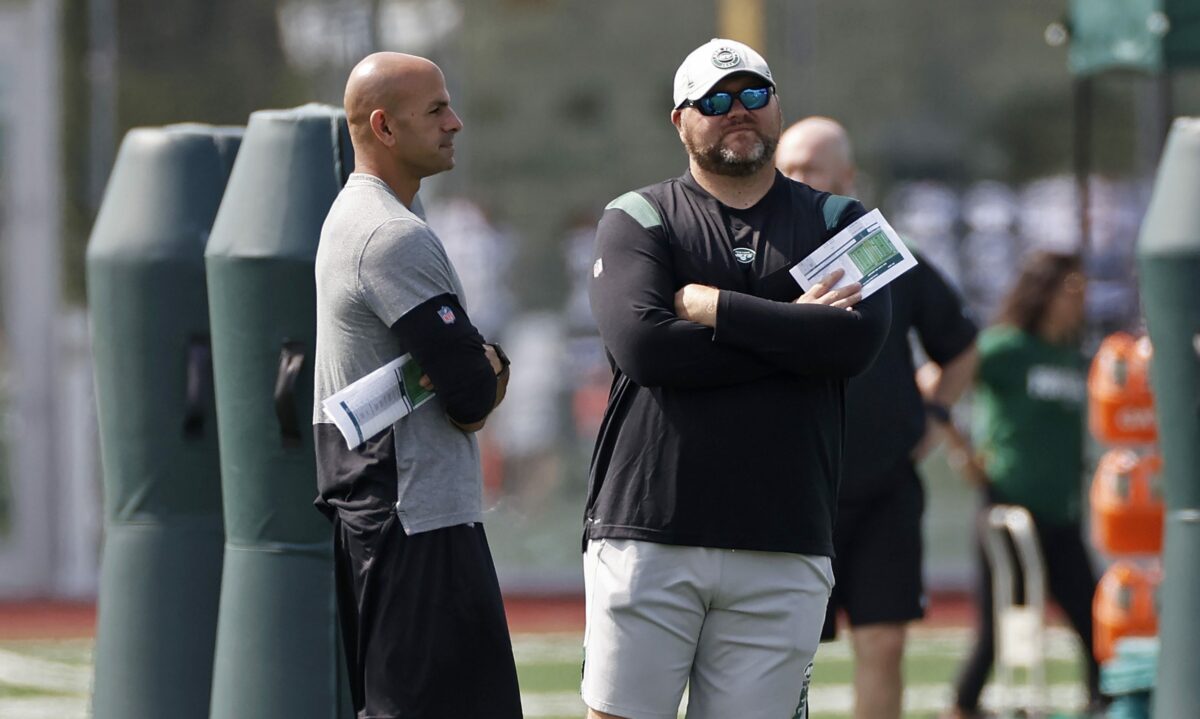Should the Jets keep Trumaine Johnson for another season? Jets Wire says no way.
Before free agency kicks off in March, Jets general manager Joe Douglas is going to have some decisions to make on players already at One Jets Drive.
Along with New York’s 32 impending free agents, there are a handful of players who could be shown the door in an effort to free up salary cap space. The Jets have $53 million to spend right now, according to Spotrac. That number could grow exponentially if Douglas parts ways with players eating up a large chunk of Gang Green’s payroll.
Among those who are a candidate to become a cap casualty is cornerback Trumaine Johnson. After signing a massive five-year, $72.5 million with the Jets in 2018, Johnson has been nothing short of a disappointment in his time with the team. Should he be granted another season to figure things out? Let’s evaluate the situation.
Pros of keeping him
The Jets are in bad shape at cornerback. Brian Poole is set to hit free agency and there is no guarantee he returns to the Big Apple next season. Darryl Roberts was awful in 2019 and is also a candidate to get cut. If Johnson is let go, that leaves New York with Bless Austin, Kyron Brown and Nate Hairston. Maurice Canady and Arthur Maulet are set to hit the open market.
Yes, Johnson has underperformed since joining the Jets. However, there is a reason why he was once the best cornerbacks in football. The 30-year-old has lost a step the last couple of years, but who is to say he can’t bounce back and put together a productive 2020 season? He did look good in training camp last summer before injuring his hamstring, after all.
Cornerback is New York’s weakest position group at this juncture. Why not give Johnson one last shot to get it right?
Cons of keeping him
There is really no point in keeping Johnson at his current salary. New York owes him $11 million next season. Johnson is not worth that number considering how he has performed the last two seasons.
If the Jets release Johnson before June 1, they would absorb $12 million in dead cap, but free up $3 million in cap space. That would allow Douglas to go out and sign a corner to replace him in free agency.
Not only does cutting Johnson make sense from a financial standpoint, but from a schematic point of view as well. Johnson found himself in defensive coordinator Gregg Williams’ doghouse before landing on injured reserve. With the Jets looking to get younger, why would they keep an underperforming and overpaid veteran around?
The verdict
The argument that New York’s cornerback room would become even more of a mess without Johnson could give reason to believe he is worth keeping around for another year, but do not be fooled by this line of thinking.
Keeping Johnson does not solve anything. Just because he has a history of elite production does not mean he is magically going to return to that level of play. The Jets should not keep Johnson. Period.
The bottom line is, New York is better off without its 30-year-old, $72.5 million dollar man on the roster. It’s time to move on from arguably the worst free agent signing in franchise history.







